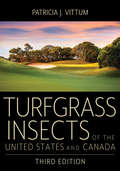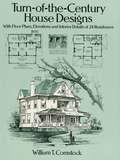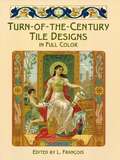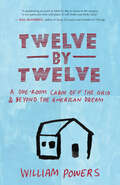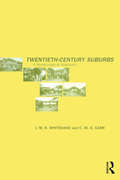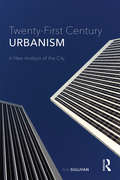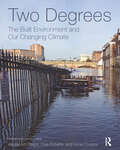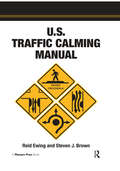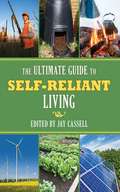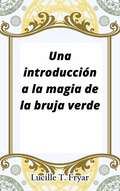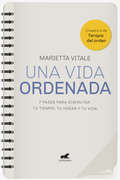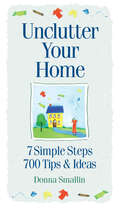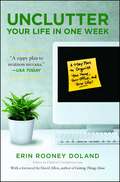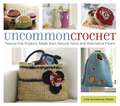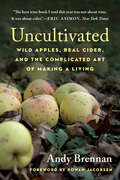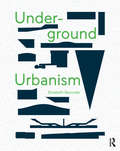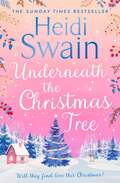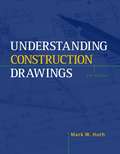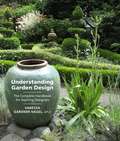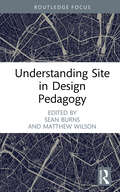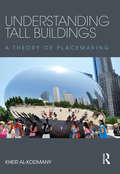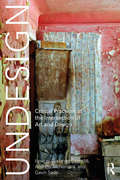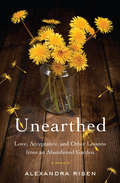- Table View
- List View
Turfgrass Insects of the United States and Canada
by Patricia J. VittumThe first edition of this reference work became known as the bible of turfgrass entomology upon publication in 1987. It has proved invaluable to professional entomologists, commercial turf managers, and golf course superintendents and has been used widely in college extension courses. This classic of the field is now in its third edition, providing up-to-date and complete coverage of turfgrass pests in the continental United States, Hawaii, and southern Canada.This revised volume integrates all relevant research from the previous two decades. It provides expanded coverage of several pest species, including the annual bluegrass weevil, invasive crane fly species, chinch bugs, billbugs, mole crickets, and white grubs. Patricia J. Vittum also provides detailed information on the biology and ecology of all major pests and includes the most current information on conditions that favor insect development and biological control strategies pertinent to each species.This edition will include more than 100 black-and-white images, including diagrams of life cycles, sketches of morphological characteristics, and charts highlighting seasonal activity. The book also includes 72 full-color plates (more than 500 color images), showing closeup pictures of most of the key insects (adult and immature stages) and damaged turf. The reader should be able to identify most turf insects through the use of this text. It is a critical reference work that any serious turf professional should own.
Turn-of-the-Century House Designs: With Floor Plans, Elevations and Interior Details of 24 Residences
by William T. ComstockThis inexpensive archive of handsome turn-of-the-century designs reprinted directly from a rare late Victorian volume contains plans for a variety of suburban and country homes that are both aesthetically appealing and moderate in cost. Included are plans for 24 cottages and houses in a wide range of styles, among them Queen Anne, Eastlake, and Colonial. Over 130 illustrations — floor plans, elevations, perspective views, and more — enhance the text, which is further supplemented by two informative and useful articles: "Suggestions on House Building," by A. W. Cobb, describes the process of building a home, from the first sketches offered by the architect to his client, to property selection, scale drawings, and details of construction. “How to Plumb a Suburban House,” by Leonard D. Hosford, provided the late Victorian era homeowner with valuable advice about sewage disposal.Restorers of old houses, preservationists, and students of American architectural history will welcome this treasury of authentic century-old plans and details. Students of social history will also find it an excellent reference.
Turn-of-the-Century Tile Designs in Full Color
by L. FrancoisCarefully selected from a rare 1905 French tile catalog, this splendid full-color collection of tile designs features scores of eye-catching motifs. A valuable resource for today's artists and designers, this volume of authentic images can also serve as inspiration for craftspeople working in a variety of areas. The 250 illustrations include panels and borders of all sizes, decorated with lotus blossoms, lilies-of-the-valley, irises, and other delicate florals; multicolored designs promoting meat markets, dairies, and other commercial establishments; decorative wall tiles for bathrooms; stenciled friezes with ornate floral and foliate motifs; vibrantly colored enameled squares; geometrics; and much more. Rich in Art Nouveau flavor and elegance, these versatile copyright-free designs not only constitute an invaluable archive of usable art and design inspiration but also a magnificent browsing book for lovers of the decorative arts.
Twelve by Twelve: A One-Room Cabin Off the Grid and Beyond the American Dream
by Bill PowersWhy would a successful American physician choose to live in a twelve-foot-by-twelve-foot cabin without running water or electricity? To find out, writer and activist William Powers visited Dr. Jackie Benton in rural North Carolina. No Name Creek gurgled through Benton’s permaculture farm, and she stroked honeybees’ wings as she shared her wildcrafter philosophy of living on a planet in crisis. Powers, just back from a decade of international aid work, then accepted Benton’s offer to stay at the cabin for a season while she traveled. There, he befriended her eclectic neighbors — organic farmers, biofuel brewers, eco-developers — and discovered a sustainable but imperiled way of life. In these pages, Powers not only explores this small patch of community but draws on his international experiences with other pockets of resistance. This engrossing tale of Powers’s struggle for a meaningful life with a smaller footprint proposes a paradigm shift to an elusive “Soft World” with clues to personal happiness and global healing.
Twentieth-Century Suburbs: A Morphological Approach (Planning, History and Environment Series #Vol. 1)
by C.M.H Carr J.W.R WhitehandGarden suburbs were the almost universal form of urban growth in the English-speaking world for most of the twentieth century. Their introduction was probably the most fundamental process of transformation in the physical form of the Western city since the Middle Ages.This book describes the ways in which these suburbs were created, particularly by private enterprise in England in the 1920s and 1930s, the physical forms they took, and how they have changed over time in response to social, economic and cultural change.Twentieth-Century Suburbs is concerned with the history, geography, architecture and planning of the ordinary suburban areas in which most British people live. It discusses the origins of suburbs; the ways in which they have been represented; the scale and causes of their growth; their form and architectural style; the landowners, builders and architects responsible for their creation; the changes they have undergone both physically and socially; and their impact on urban form and the implications for urban landscape management.
Twenty-First Century Urbanism: A New Analysis of the City
by Rob SullivanThis volume argues that the city cannot be captured by any one mode of analysis but instead is composed of the mobile, relational, efficient, sentient, and the phenomenological with all of them cast in new theoretical configurations and combined into one methodological entity. Rather than focusing on any one city or abstract analytical model, this book instead takes a multipronged theoretical and methodological approach to present the city as an intelligent affective organism – a sentient being. It proposes that cities operate on a relational, mobile, and phenomenological basis through the mode of efficiency, calibrated by a profoundly complicated division of labor. Its starting point is that the city is a mobile unit of analysis, from its economic status to its demographic makeup, from its cultural configuration to its environmental conditions, and therefore easily evades our quantitative and qualitative methods of computation and comprehension. Twenty-First Century Urbanism provides planning and urban design academics and students with a multifaceted approach to understanding the development of cities, encouraging the examination of cities through a myriad, non-linear approach.
Two Degrees: The Built Environment And Our Changing Climate
by Alisdair McGregor Cole Roberts Fiona CousinsThe Earth’s temperature has been rising. To limit catastrophic outcomes, the international scientific community has set a challenging goal of no more than two degrees Celsius (3.6 degrees Fahrenheit) average temperature rise. Economists agree we will save trillions of dollars by acting early. But how do we act successfully? And what’s the backup plan if we fall short? Setting politics aside, Two Degrees reviews the current science and explains how we can set practical steps to reduce the extent of warming and to adapt to the inevitable changes, all while improving the bottom line, beautifying our communities, and increasing human health. The book is a practical guide intended for a broad audience of those who occupy and shape our built environment. The authors provide a clear framework for communities, policy makers, planners, designers, developers, builders, and operators to help manage the impacts and capture the opportunities of our changing climate. Two Degrees is divided into three sections—Fundamentals, Mitigation, and Adaptation—covering a diverse array of topics ranging from climate-positive communities and low-carbon buildings to the psychology of choice and the cost of a low-carbon economy. After a foreword by Amory Lovins, more than 10 contributing authors share knowledge based on direct experience in all aspects of built environment practice. This book clarifies the misconceptions, provides new and unique insights, and shows how a better approach to the built environment can increase resilience and positively shape our future.
U.S. Traffic Calming Manual
by Reid EwingA comprehensive how-to manual for traffic calming in the United States. Planners and engineers can look to this manual for guidance on the appropriate use, design, and signing and marking of traffic-calming measures. For local officials, developers, and community associations, it is an introduction to the goals and tactics of traffic calming. Based in part on the first traffic-calming manual taken through a formal rule-making process and adopted by a state department of transportation as a supplement to its roadway design manual, this book catalogs principles that have been modified by many local jurisdictions to match local priorities and preferences. Standardization is key to the success of traffic-calming initiatives, and this book explains the processes, tools, and design needed to create a standard traffic-calming program. It also shows how municipalities can build needed flexibility into such programs. Signage and markings are also key, and a chapter is devoted to these issues. This is the book that states and municipalities need to create effective traffic-calming programs.
Ultimate Guide to Self-Reliant Living, The
by Jay CassellBeing a homesteader today may seem difficult; the world is full of so many gadgets and conveniences, many of which most of us consider necessary to live a full and happy life. In this collection, edited and arranged by Jay Cassell, you'll see that going off the grid, adapting to your surroundings, and depending on yourself and your land is really not as challenging as one may think. With the information and tips you learn in this book, you'll easily find success as a modern-day homesteader.The essays featured in The Ultimate Guide to Self-Reliant Living were written by some of today's most respected outdoorsmen and outdoorswomen, nature enthusiasts, agricultural professionals, and successful homesteaders. Through the information on these pages, you will learn the best techniques and approaches concerning:Hunting, fishing, and trappingForagingGrowing and preparing your own foodAnimal husbandryLiving off the gridBuilding barns and outbuildingsGreen livingCountry skillsAlternative energy, such as solar panels and windmillsPrimitive survival skills, such as making fires and finding shelter
Una introducción a la magia de la bruja verde
by Lucille T. FryarDesmitifica los poderes ocultos de la magia antigua con esta sencilla guía de brujería verde. Practicar y experimentar lo sobrenatural con magia verde es lo que cualquier bruja puede infundir en su vida cotidiana. Esta guía fácil y bien escrita lo lleva suavemente al mundo de la bruja verde que nos rodea y, al mismo tiempo, explica las prácticas antiguas en formas fáciles de entender para ayudarlo a comprender y practicar los conceptos básicos de esta forma de magia. . Como bruja verde, debes estar abierta a dejar que el poder de la naturaleza fluya a través de ti; tire y aproveche los poderes de las hierbas, las flores y las piedras para los hechizos. En esta guía, aprenderá métodos simples para cultivar sus plantas mágicas y tipos de plantas y cómo sacar la magia en ellos para elevar su práctica. Con los valiosos consejos sobre el uso exitoso de ingredientes mágicos, avanzará varios pasos para hacerse cargo de su práctica y forjar un vínculo más profundo con la naturaleza. ¡Emprende este increíble viaje con Lucille T. Fryar mientras creas algo mágico que durará para siempre! Las especias y hierbas más omnipresentes en su jardín o en su cocina están llenas de poderes más allá de su imaginación más salvaje que solo pueden desbloquear aquellos que están dotados con el conocimiento de cómo hacerlo. En esta "era del jet", se necesita compromiso para sumergirse profundamente en el descubrimiento del inmenso poder que tiene la naturaleza. ¿Anhelas convertirte en un iniciado? esta guía te abrirá el mundo de la magia verde atemporal. Este libro es único en eso; Proporciona una forma de orientación que no está fácilmente disponible para transformar los poderes del verde desde el exterior en su espacio personal dentro de su hogar. Estudie y practique hechizos, pociones y rituales de magia verde simples y potentes que lo cimienten a uno en esta forma eterna de magia. Dispo
Una vida ordenada: 7 pasos para disfrutar tu tiempo, tu hogar y tu vida
by Marietta VitaleUna vida ordenada, el nuevo libro de la interior planner Marietta Vitale, tiene como objetivo sumar la organización personal y hacer foco en nuestra primera casa, es decir, nuestro cuerpo. ¿Cómo hacer para que nos rindan las 24 horas del día, que parecen no alcanzar nunca para todo lo que debemos -y queremos- hacer? El fin de este libro es articular el orden de los espacios con la organización personal. Lograr un día a día más simple es posible. ¡Basta de "no tengo tiempo para nada"! En siete pasos, Marietta Vitale propone aprovechar el tiempo de la mejor manera. La autora ha ayudado a centenares de personas a cambiar su vida a partir del orden. Sin embargo, a veces otros aspectos de la vida siguen desorganizados. Para estar en equilibrio, este es el momento de centrarte en tus tiempos y tu cuerpo. La creadora de Terapia del orden ahora va un paso más allá con una guía pensada para que, a través del orden, hagas todo lo que querés, maximizando tu bienestar y el de quienes te rodean.
Unclutter Your Home: 7 Simple Steps, 700 Tips & Ideas (Storey's Simplicity Ser.)
by Donna SmallinOrganizing expert Donna Smallin gives you a simple 7-step plan for conquering clutter forever. Using a friendly tips-based format, she walks you through hundreds of small strategies that add up to big successes. She explains how to assess your situation (beginning with a great little quiz that helps you identify some of your core clutter issues), and then she helps you set your intentions and find profound, personal motivations for creating a more ordered life for yourself. You'll then move on to painlessly letting go of what you no longer need, creating a place for each of the things you decide to keep, and implementing simple systems that will KEEP your home clutter-free with a minimum of effort. The print edition of Unclutter Your Home has more than 100,000 copies in print, and this ebook has been thoroughly revised and updated to reflect the way we live today.
Unclutter Your Life in One Week
by David Allen Erin R DolandSIMPLICITY IS REVOLUTIONARY. Organization expert Erin Rooney Doland will show you how to clear the clutter, simplify your surroundings, and create the stress-free life you deserve--in just one week. Her down-to-earth approach and useful, innovative suggestions for tackling the physical, mental, and systemic distractions in your home and office will help you: *Part with sentimental clutter *Organize your closet based on how you process information *Build an effective and personalized filing system *Avoid the procrastination that often hinders the process *Maintain your harmonious home and work environments with minimal daily effort *And much more!
Uncommon Crochet: Twenty-Five Projects Made from Natural Yarns and Alternative Fibers
by Julie Armstrong HoletzBlack leather granny squares are anything but square, and hot pink organic hemp gives crocheted vases a decidedly modern cachet. In Uncommon Crochet, designer Julie Armstrong Holetz applies new ideas and unconventional materials--like wire, raffia, jute, sisal, recycled belts, fabric strips, and felted beads--to twenty-five patterns for bins, baskets, totes, handbags, clutches, jewelry, and more. Step-by-step instructions, detailed how-to photographs, and essential advice about creativity, design, and experi-mentation encourage you to play with fiber, add funky embellishments, and use your creative spirit to customize any pattern--even the ones in this book! From practical containers like Red's Goodie Basket (a stylish home for your WIP--works in progress) and Vintage Satchel (a sturdy retro messenger bag) to just plain fun projects like Petite Fleur Vases (tiny bud vases that hold water) and Sushi (crocheted California rolls, anyone?), Uncommon Crochet offers fresh twists on old-school techniques that turn simple projects into gift-worthy creations.
Uncultivated: Wild Apples, Real Cider, and the Complicated Art of Making a Living
by Andy Brennan&“The best wine book I read this year was not about wine."—Eric Asimov, New York TimesToday, food is being reconsidered. It&’s a front-and-center topic in everything from politics to art, from science to economics. We know now that leaving food to government and industry specialists was one of the twentieth century&’s greatest mistakes. The question is where do we go from here.Author Andy Brennan describes uncultivation as a process: It involves exploring the wild; recognizing that much of nature is omitted from our conventional ways of seeing and doing things (our cultivations); and realizing the advantages to embracing what we&’ve somehow forgotten or ignored. For most of us this process can be difficult, like swimming against the strong current of our modern culture.The hero of this book is the wild apple. Uncultivated follows Brennan&’s twenty-four-year history with naturalized trees and shows how they have guided him toward successes in agriculture, in the art of cider making, and in creating a small-farm business. The book contains useful information relevant to those particular fields, but is designed to connect the wild to a far greater audience, skillfully blending cultural criticism with a food activist&’s agenda.Apples rank among the most manipulated crops in the world, because not only do farmers want perfect fruit, they also assume the health of the tree depends on human intervention. Yet wild trees live all around us, and left to their own devices, they achieve different forms of success that modernity fails to apprehend. Andy Brennan learned of the health and taste advantages of such trees, and by emulating nature in his orchard (and in his cider) he has also enjoyed environmental and financial benefits. None of this would be possible by following today&’s prevailing winds of apple cultivation.In all fields, our cultural perspective is limited by a parallel proclivity. It&’s not just agriculture: we all must fight tendencies toward specialization, efficiency, linear thought, and predetermined growth. We have cultivated those tendencies at the exclusion of nature&’s full range. If Uncultivated is about faith in nature, and the power it has to deliver us from our own mistakes, then wild apple trees have already shown us the way.&“The book for cider lovers&”—New York Times&“Andy Brennan is a stubborn, thoughtful original, and his apple memoir is powered by inspiring verve and irreverence. Loving apples or cider is not a prerequisite for loving this book. All that is needed is the willingness to follow a vibrant narrative voice driven by the pursuit of dreams.&”—Alice Feiring, author of Naked Wine and For the Love of Wine
Underground Urbanism
by Elizabeth ReynoldsHave you ever wondered what lies beneath the streets of your city? Do you picture, in isolation, a series of train tunnels and pipes? Or perhaps the foundations of tall buildings that lie scattered, like icebergs, beneath the surface? As our cities grow up, out, and down, it is time we better understood how the different layers of these complex urban environments relate to one another. Underground Urbanism seeks to provide a new perspective on our cities, and consider how this might be used to engage more positively with them. So, tip your cities upside down to have a closer look, and let us rethink them from (below) the ground, up.
Underneath the Christmas Tree: 'A seasonal romance as warm and welcome as a mug of mulled wine' Woman & Home
by Heidi Swain***The sparkling Christmas novel from the Sunday Times bestselling author Heidi Swain!*** Wynter&’s Trees is the home of Christmas. For the people of Wynmouth it&’s where they get their family Christmas tree, and where Christmas truly comes to life. But for Liza Wynter, it&’s a millstone around her neck. It was her father&’s pride and joy but now he&’s gone, she can&’t have anything to do with it. Until her father&’s business partner decides to retire and she must go back to handle the transition to his son Ned. When Liza arrives, she discovers a much-loved business that&’s flourishing under Ned&’s stewardship. And she&’s happy to stay and help for the Christmas season, but then she has other plans. But will the place where she grew up make her change her mind? And can it weave its Christmas cheer around her heart…?Underneath the Christmas Tree is the perfect festive read, promising snowfall, warm fires and breath-taking seasonal romance. Perfect for fans of Milly Johnson, Carole Matthews and Cathy Bramley.Praise for Underneath the Christmas Tree &‘Heidi Swain is the queen of feel-good fiction, and this Yuletide yarn certainly ticks all our boxes&’ New! Magazine &‘A seasonal romance as warm and welcome as a mug of mulled wine&’ Woman & Home &‘You&’ll want to curl up with a hot choc to read this warm hug of a festive book&’ Fabulous MagazinePraise for HEIDI SWAIN: 'Full of Heidi&’s trademark gentle charm. Lock the door, pour some mulled wine and settle into this wonderful Christmas treat!' Milly Johnson 'More Christmassy than a week in Lapland - we loved it!' heat magazine 'Sprinkled with Christmas sparkle' Trisha Ashley 'Give yourself a Christmas treat and curl up with this magical book!' Sue Moorcroft, author of The Little Village Christmas 'A real Christmas cracker of a read!' Penny Parkes, author of Practice Makes Perfect 'Cosy, Christmassy and deeply satisfying! Another wonderful read!' Mandy Baggot, author of One Christmas Kiss in Notting Hill
Understanding Construction Drawings (5th Edition)
by Mark W. HuthUpdated to the 2006 International Building and Residential Codes, the fifth edition of UNDERSTANDING CONSTRUCTION DRAWINGS continues to highlight a range of real construction projects - from residential dwellings to commercial structures. This enhanced edition combines information and a hands-on approach to learning. The text provides thorough coverage that builds the foundation for a broad understanding of the entire construction process. The book begins with a simple duplex home that focuses readers on the fundamentals of views, lines, basic dimensioning, and symbols. Next, coverage of a multi-level single family home goes into more depth in orienting and cross-referencing drawings. The third section explores multifamily construction and is accompanied by more complex drawings for practice and more advanced interpretations. The final portion of the book introduces students to elements of commercial construction, including structural steel, masonry, and reinforced concrete. An extensive set of drawings packaged with the book illustrates each building so that students can apply important skills and gain a "real-world" understanding of construction drawings in an engaging way.
Understanding Garden Design: The Complete Handbook for Aspiring Designers
by Vanessa Gardner Nagel APLDDesigning a garden is a complex task. Where do you start? What kind of skills do you need? What are the logical steps in creating a design? How do you communicate your ideas to a client, and how do you accommodate a client’s requests while maintaining the integrity of the project? The answers to these questions, and many more, can all be found in Understanding Garden Design.Most books on garden design focus on only one or a few aspects of garden design—choosing plants or creating a hardscape, for example. This comprehensive, accessible book lays out the entire process from start to finish in clear, precise language that avoids the pitfalls of “designspeak.” In fact, garden owners and clients of garden designers who want to understand more about the designer’s craft will be able to profit from the book’s lessons.Among the many topics covered are how to document a site, how to determine what a client needs and wants from the garden, how to take architectural features into consideration, how to think about circulation and lay out paths, how to use basic design principles, how to work with plants, and how to create a final design. Practical aspects are clearly laid out, including working with contractors and staying on top of the various phases of construction. This thorough handbook is profusely illustrated with helpful photographs and diagrams. A particularly interesting tool is the hypothetical garden plan that appears in each chapter to show how to apply the topics at hand. A practical, logical approach to the planning, design, and installation of a garden, this volume will be an invaluable resource for students, landscape professionals, and garden designers.
Understanding God’s World
by Dawn MerenessThe Author describes GOD's creation in his books, about Science, Insects, Plants, Birds, Water, Air, Weather, Sound and Hearing. Geology, Planet Earth, Oceanography, Wonders of the Sea and Astronomy.
Understanding Metropolitan Landscapes
by Andrew MacKenzieUnderstanding Metropolitan Landscapes considers and reflects on the fundamental relationships between metropolitan regions and their landscapes. It investigates how planning and policy help to protect, manage and enhance the landscapes that sustain our urban settlements. As global populations become more metropolitan, landscapes evolve to become increasingly dynamic and entropic; and the distinction between urban and non-urban is further fragmented and yet these spaces play an increasingly important role in sustainable development. This book opens a key critical discussion into the relational aspects of city and landscape and how each element shapes the boundaries of the other, covering topics such as material natures, governance systems, processes and policy. It presents a compendium of concepts and ideas that have emerged from landscape architecture, planning, and environmental policy and landscape management. Using a range of illustrated case studies, it provokes discussions on the major themes driving the growth of cities by exploring the underlying tensions around notions of sustainable settlement, climate change adaption, urban migration, new modes of governance and the role of landscape in policy and decision making at national, provincial and municipal levels.
Understanding Site in Design Pedagogy (Routledge Focus on Design Pedagogy)
by Sean Burns Matthew WilsonThis book examines diverse ways of questioning, critiquing, and communicating site in the creative process of architecture, interior design, urban planning, and historical and cultural studies. The authors use the term site to connote a series of complex, established, or pre-existing conditions – a setting, an atmosphere, an area – to read, to interpret, to relate to, and to engage with, to redefine, or to create in relation to a design prompt. By acknowledging, accommodating, and empowering the physical, intellectual, and cultural characteristics of a site, students question its history, boundaries, posture, and situational aspects. Such inquiries promote a deeper appreciation of a site and thus help students to acknowledge its capacity to influence design throughout the iterative creative process. Understanding Site in Design Pedagogy adds to the body of literature on design studio pedagogy by presenting a collection of essays that challenge normative assumptions about what defines a site and its distinctive qualities. It poses a series of pedagogical questions for how sites might be diversely interpreted and introduced to design students. This study offers chapters that speak to site, memory, and lived experience; multi-scalar thinking about site; connecting to site through sensory phenomenon in interior design; alternate ways of engaging site for learning sustainable principles; and introducing unorthodox forms of site as the impetus to creative endeavours. It offers innovative approaches to scholarship of teaching and learning with respect to diverse readings of site within design education.
Understanding Tall Buildings: A Theory of Placemaking
by Kheir Al-KodmanyIn recent years, the rapid pace of tall building construction has fostered a certain kind of placelessness, with many new tall buildings being built out of scale, context and place. By analyzing hundreds of tall buildings and by providing hundreds of visuals that inspire, stimulate and engage, Understanding Tall Buildings contends that well-designed tall buildings can rejuvenate cities, ignite economic activity, support social life and boost city pride. Although this book does not claim to possess all the solutions, it does propose specific tall building design guidelines that may help to promote placemaking. Through this work, it is the author’s hope that ill-conceived developments will become less common in the future and that good placemaking will become the norm, not the exception. This book is a must-read for students and practitioners working to create better tall buildings and better urban environments.
Undesign: Critical Practices at the Intersection of Art and Design
by Andrew McNamara Gretchen Coombs Gavin SadeUndesign brings together leading artists, designers and theorists working at the intersection of art and design. The text focuses on design practices, and conceptual approaches, which challenge the traditional notion that design should emphasise its utility over aesthetic or other non-functional considerations. This publication brings to light emerging practices that consider the social, political and aesthetic potential of "undesigning" our complex designed world. In documenting these new developments, the book highlights the overlaps with science, engineering, biotechnology and hacktivism, which operate at the intersection of art and design.
Unearthed: Love, Acceptance, and Other Lessons from an Abandoned Garden
by Alexandra Risen&“A generous, poignant memoir&” of loss, family secrets, and a quest to shape something beautiful out of the chaos of nature (Kirkus Reviews). Just as Alex and her husband buy a house in Toronto, set atop an acre of wilderness that extends into a natural gorge in the middle of the city, she learns that her father, a Ukrainian-born immigrant, has died. Her new home&’s gigantic, abandoned garden, choked with weeds and crumbling antique structures, resembles a wild jungle—and it stirs cherished memories of Alex&’s childhood: When her home life became unbearable, she would escape to the forest. In her new home, Alex can feel the power of the majestic trees that nurtured her in her youth, but as she begins to beat back the bushes to unveil the garden&’s mysteries, her mother has a stroke and develops dementia. When Alex discovers an envelope of yellowed documents while sorting through her father&’s junk pile, offering clues to her parents&’ mysterious past, she reluctantly musters the courage to uncover their secrets. While discovering the plants hidden in the garden—from primroses and maple syrup–producing sugar maples to her mother&’s favorite, lily of the valley—she must come to terms with the circle of life around her, and find the courage to tend to her own family&’s future. &“The land is rife with unexpected delights: a huge, decaying pagoda, underground aquifers, a pond, koi, deer, and all manner of vegetation. . . . As she restores the property and heals her long-troubled soul, Risen paints a vivid and exquisite portrait of nature and its profound significance.&” —Publishers Weekly
